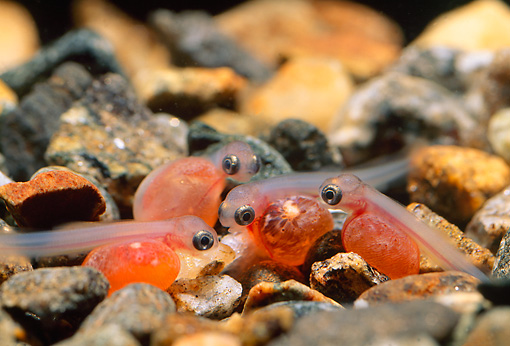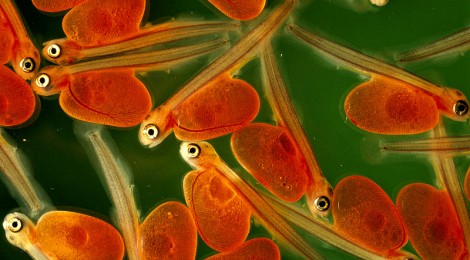
Copper Kills Salmon Sense Of Smell
Will The Largest Mine Waste Disaster In History In Canada Destroy The Largest Salmon Run In History
A study in Ecological Applications reveals incredibly small amounts of copper in water kills salmon sense of smell.
A salmon sense of smell is so sensitive, perhaps the most sensitive of any living thing on earth.
Salmon can follow its nose hundreds of miles up a river past a thousand possible spawning sites that don’t smell just right until it finds the one square meter of gravel where it was hatched 4 or more years before.
The only thing the long dead salmon parents leave behind is the smell of their bones left in that gravel and their dying advice to the next generation, “trust your nose little one”.
Since leaving that gravel nursery and its unique smell the baby fish swam to sea, multiplied its weight by 10,000 times before swimming thousands of miles 4 years later back to its gravel cradle.
Now in a Washington State University (WSU) study postdoctoral research associate Jenifer McIntyre and her colleagues set out to see if contaminants in a salmon’s environment might interfere with its sense of smell and ability to find home.
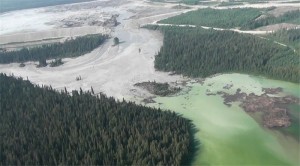
Mt. Polley Quesnel Lake Copper Mine Waste Disaster – largest in history, into and at the very moment of most important salmon migration on earth.
They put 2 + 2 together and discovered a dire warning. The most sensitive nose and the most common and active potential contaminant, copper from mine waste could add up to disaster. To discover how bad things might be they exposed juvenile coho salmon to copper and pitted them against cutthroat trout, a common coho predator.
Just a minute amount of copper—five parts per billion—in the test tank was sufficient to kill a coho’s nasal sensory system. Now unaware of the predators in the tank they took to swimming without the fear they should have felt and were attacked within eight seconds by their predators. Copper-free fish remained quiet and weren’t discovered by predators for far longer times.
Safe Daily Dose of Copper
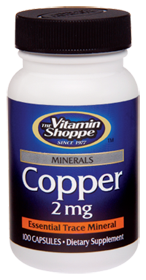
Copper is needed for health in minute amounts. The Canadian mine disaster dumped the equivalent to nearly 1 trillion bottles of copper like this into the path of the largest run of salmon in history.
Salmon, like humans, require a little copper but not too much. A healthy human daily dose of 1.5 to three milligrams per day is enough to help you avoid copper deficiency, according to the Mayo Clinic website.
Drinking water standards for copper allow 1.3 ppm in almost all jurisdictions. But wait! The effect that impacts the sense of smell in salmon as shown in the study cited is just 5 ppb — that’s 1/250th of the dose allowed for human drinking water. We just aren’t nearly as sensitive to copper as salmon.
Oysters, shellfish, liver, whole grains, dark leafy vegetables, nuts, and chocolate are all good sources. For you salmon reading we recommend krill, copepods, or if your in the river — never mine you don’t want to know.
The U.S. Environmental Protection Agency, which regulates copper levels in drinking water warns that exposure to more than 1,300 parts per billion of copper can result in gastrointestinal distress, and liver or kidney damage. Most human exposure to copper comes from corroded pipes and plumbing fixtures.
Humans, can also experience disruptions in the sense of smell when they inhale too much copper, said WSU’s McIntyre. But it is much less likely that they’d be exposed to neurotoxic concentrations.
Copper Mining Threat
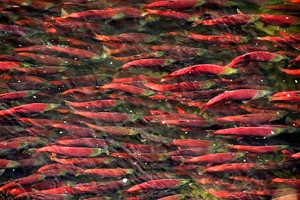
Forecasters predict between 26 -72 million beautiful red Sockeye are swimming into the Fraser River right now.
Copper is common in the environment. It is found at increased levels in regions that have been developed for housing or commercial buildings, according to McIntyre. But the main concern about copper is all about large-scale copper mining, and the leakage, and heaven forbid catastrophic release of copper in mine waste disasters.
The researchers worst fears have just happened the largest in history that has just occurred in British Columbia right on top of the largest salmon return in all of history. Will those salmon be able to follow their nose home and if they do what will happen when they swim right into the center of the mine waste spill.
Where does copper that ends up in urban waterways come from. Most is dust from vehicle brake linings that are designed to make a tiny amount of copper laden dust every time you touch your brakes. Rain washes it from roads and parking lots. Fortunately some salmon states are now banning the use of copper in automotive brake pads.
Other sources include pesticides, building and plumbing materials, and protective boat coatings, according to WSU.
It is mining operations that expose waterways, and fish, to vast amounts of the raw mobilized metal.
The University study warns that large copper mining operations, such as Alaska’s proposed Pebble Mine near Bristol Bay would produce tens of billions of pounds of copper that could affect a nearby sockeye salmon fishery—the largest in the world. Little did they know that just a few hundred miles from their university a far worse copper mine waste disaster was waiting to occur as it did this week.
Put your headphones on, turn the volume up loud, grit your teeth, and watch… Fishpocalypse Now
The Horror!
Here’s a related paper from Oregon State









